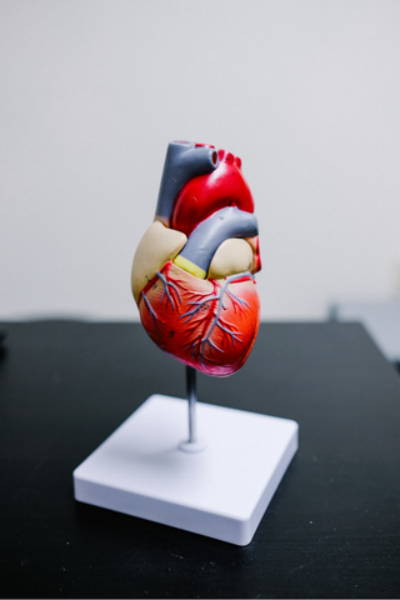A blood pressure (BP) machine - commonly referred to as a sphygmomanometer in medical terms - is one of the essential medical devices used to check blood pressure.
Regular monitoring of blood pressure is a critical element of early diagnosis of serious life-threatening complications, especially those affecting the heart such as hypertension, stroke, and myocardial infarction.
Patients are often advised to check their blood pressure at home on a regular basis so that they can detect any deviation from normal blood pressure and seek timely medical intervention to prevent complications.
Here is a brief discussion aimed at analyzing the principles of blood pressure measurement, the benefits of checking blood pressure at home, who needs to monitor blood pressure, and how to perform blood pressure checks at home.
Principles Of Blood Pressure Measurement
Blood pressure is one of the vital parameters of general health as well as cardiac health as it reflects the normal as well as abnormal functioning of the heart and blood vessels. Blood pressure monitoring is also effective for assessing renal functions and body hydration levels.

Blood pressure basically refers to the pressure exerted by the blood on the walls of the arteries and veins as it flows through these vessels.
The primary function of the heart is to supply blood to the organs and tissues of the body. With every beat, the heart pumps blood into circulation through the large blood vessels. As the blood circulates around the body, it exerts pressure on the inner walls of the vessels, which can be measured in two values as explained below:
· Systolic blood pressure: It is the measure of pressure when the heart beats or while the muscles in the heart are contracting to pump oxygen-rich blood into the large blood vessels.
· Diastolic blood pressure: It is the measure of pressure exerted by the blood on the walls of the vessels when the heart muscles are relaxed. The diastolic pressure is typically lower than the systolic pressure.
The unit of measurement of blood pressure is millimeters of mercury, often written as mm of Hg. The reading of blood pressure is always mentioned in pairs, with the systolic (upper) value first, followed by the diastolic (lower) value.
For example, a blood pressure reading of 130/90 mm of Hg (spoken as “130 by 90” or “130 over 90”) means that the patient's systolic blood pressure is 130 mm of Hg, and the diastolic blood pressure is 90 mm of Hg.
The normal range of blood pressure for adults is 120/80 mm of Hg.
Having blood pressure significantly higher or lower than this range requires medical intervention. A sudden rise in blood pressure above 150 or 160 mm of Hg for systolic pressure and 100 or 110 mm of Hg for diastolic pressure needs to be treated as an emergency in order to avoid potentially life-threatening complications such as cerebrovascular stroke and myocardial infarction.
High blood pressure is an important marker of cardiac complications such as stroke and myocardial infection. This means patients suffering from hypertension are more vulnerable to developing these life-threatening conditions when appropriate treatment to control the blood pressure within normal limits is not provided.
This emphasizes the importance of the regular monitoring of blood pressure so that dysfunctions related to cardiac activities can be detected at an early stage.
Low blood pressure, on the other hand, can be a sign of reduced hydration and lower nutrition.
Who needs to do a regular blood pressure test?
Who needs to do a regular blood pressure test?
Regular blood pressure monitoring is recommended in the following cases:
· Patients above 50 years of age are advised to check their blood pressure once in 6 months as the risk of developing hypertension and related complications tense to rise with aging.
· Patients who are diagnosed with hypertension should check their blood pressure more frequently. If the blood pressure is stable and within the normal limits after starting the treatment for hypertension, the patient can check their blood pressure once every month. Blood pressure needs to be monitored on a more frequent basis if proper control of blood pressure is not achieved through medication, when any new medication is added to the treatment plan, or when the doses of the existing medications are modified.
· Patients suffering from kidney dysfunctions such as chronic renal failure and nephrotic syndrome are also advised to monitor their blood pressure regularly.
What are the benefits of taking a BP test at home?
Taking a BP test at home is one of the efficient preventive measures for reducing the risk of complications related to hypertension.
Taking a BP test at home can allow patients to save time and effort to visit the doctor's hospital or clinic. It can also allow them to seek immediate treatment in case their blood pressure rises or drops suddenly.
A sudden change in blood pressure can result in the development of symptoms such as dizziness, severe headache, lightheadedness, confusion, brain fog, chest pain, tingling and numbness in the arms, and even unconsciousness. Checking the blood pressure immediately at home when these symptoms develop can allow the patient or the family member to communicate with a doctor more clearly. It can also allow the doctor to initiate the treatment promptly on the basis of the diagnosis arrived at with the help of a blood pressure machine.
The time saved in making the diagnosis can play a vital role in improving the outcomes of the treatment and reducing the risk of morbidity and mortality associated with a sudden rise or drop in blood pressure.
Taking a BP test at home can also help patients track their treatment and allow them to assess whether their dietary and lifestyle changes or medications are working as expected. Monitoring blood pressure at home can help them and their healthcare provider make appropriate decisions about the treatment plan, including changing medications and adjusting dosages.
Self-monitoring of blood pressure at home can give patients a sense of control over their health and encourage better control. It can also reduce healthcare costs by reducing doctor visits and preventing complications that invite more intensive treatments or hospitalization.
How to do a bp test at home? How can Checkme BP2A help people do this?
It is possible to do a BP test at home by using simple and easy-to-operate machines.
Checkme BP2A Blood Pressure Monitor is an easy-to-use, portable blood pressure machine that can help patients make automatic measurements of their blood pressure without using a hose or catheter. This blood pressure monitoring device offers several benefits including ease of use and built-in memory that allows 50 sets of blood pressure values to be stored.
Checkme BP2A Blood Pressure Monitor has a simple interface design that makes it a ready-to-use device as soon as it is delivered. It does not require extensive training for use and provides a quick measure of blood pressure in emergency situations.
Checkme BP2A Blood Pressure Monitor also has an in-built application that allows the data to be automatically uploaded and saved. It also includes advanced features that allow the data to be automatically analyzed after each measurement, thus providing you with a reliable reference. You can share your daily blood pressure values with your physician through this in-built application.
Conclusion
The rising incidence of hypertension and related complications has become a major cause of concern for patients as well as the medical fraternity. The availability of easy-to-use yet advanced blood pressure machines such as Checkme BP2A Blood Pressure Monitor is expected to provide an efficient way to monitor blood pressure at home, and thus, lower the incidence of hypertension-induced morbidities and mortality.
WRITTEN BY CHECKME
Related Blogs
Recommended Products
Subscribe for special promotions,
healthy knowledge, and more!





